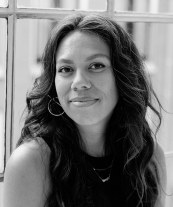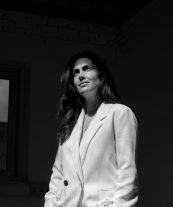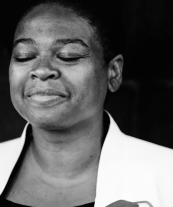Dutch Design Awards honours the very best Dutch designs from the past year.
DDA is looking for designs that are distinguishing in various areas: in first place by relevance and impact, but also the extent to which they relate to their own field. From new cross-overs and collaborations, to craftsmanship and materialization, to a stimulating approach or an attractive appearance.
DDA opts for a broad approach of the concept Dutch design:
– Designs executed by a designer or studio established in the Netherlands.
– The implementation of the design is not bound to the Dutch borders.
– It is a requirement that the design is realized/ presented/ published in the period between 1 April 2022 and 1 April 2023.
Data 2023
-
9 March
Competition open
-
20 April 23:59
Competition closed
-
29 June
Announcement nominees DDA 2023
-
September
Announcement winners DDA 2023
-
21 - 29 October
DDA Exhibition during DDW 2023
Categories
-
Product
Industrial design or limited editions that improve life and make it easier.
View previous winners
From products for the working or living environments, to human or animal mobility, for the consumer or the B2B market. -
Habitat
Design and layout of private and public spaces that have a positive influence on the quality of life. From infrastructure to interiors and from cultural to commercial, permanent or temporary.
View previous winners -
Communication
The original way in which design is used to create an effective and innovative connection between the aim, message, medium and end user. From brand and graphic design to digital and advertising.
View previous winners -
Fashion
Fashion, whereby wearability is not a requirement. From collections, unique pieces and accessories to offline or online performances.
View previous winners -
Design Research
Scenarios and concepts based on thorough research. From speculative to applied, from research to design and from ideas to solutions, with an emphasis on the research phase.
View previous winnersCriteria specific to this category
Additional criteria for the Design Research category:
General criteria
• The research issue has evident potential for the future.
• The work sets a precedent. -
Data & Interaction
Design of interactive installations and interfaces in which data is used to add value for people, society and/or nature.Projects are innovative in character and encourage (inter)action.
From artistic expressions to commercial solutions, from app to site and from installations to virtual worlds.Note: Category is replacement for Service & Systems category as of 2023.
View previous winnersCriteria specific to this category
Additional criteria for the Data & Interaction category:
General criteria
• The work is characterised by creativity and originality, in concept and/or design.
• Technology and innovation have been applied successfully and with user-friendliness. -
Best Commissioning
The prize for clients that use designers and design strategically and structurally in their business or institute. From selection and briefing to offering creative space and securing results within the organisation.
View previous winnersCriteria specific to this category
The jury uses the following criteria when assessing entries in the Best Commissioning category:
General criteria
• The quality of the request.
• The strategic impact and sustainability of the collaboration.
• The level of innovation of the collaborative form.
• The professionality of the parties involved. -
Young Designer
This is the incentive prize for young, talented designers who have been working for no more than five years as a professional designer, for example the five years after your graduation. It is important to know that a completed education is no longer obligatory. However, participation for students is excluded. The designer is central in the assessment process, and the quality of the entire portfolio will be judged.
Keep an Eye Foundation and Dutch Design Awards believe that financial support can make the difference at the beginning of someone’s career. Since 2018, Keep an Eye has therefore linked a financial incentive to DDA's Young Designer Award, with which we can seriously help young designers get started.
View previous winnersCriteria specific to this category
Note:
In the Young Designer category you submit 2 to 3 different projects from your portfolio. You do this by submitting separate entries per project in the category.Specific criteria:
General criteria
• The designer demonstrates potential for the future.
• The designer’s work questions the current state of affairs within his/her discipline.
-
Public Award
The Public Award is presented to the winner with the most public votes. During Dutch Design Week the public can vote for winners from the categories: Product, Fashion, Habitat, Communication, Design Research, Service & Systems, Young Designer and Best Commissioning.
-
Keep an Eye Foundation
Keep an Eye Foundation and Dutch Design Awards believe that financial support can really make the difference at the beginning of someone’s career. Keep an Eye has therefore linked a financial stimulant to the DDA Young Designer Award since 2018, so that we can give young designers a seriously helping hand.
Keep an Eye Foundation keeps an eye open for young, promising talents. Thanks to various scholarships, prizes, shows and festivals, these talented musicians, artists, photographers, designers and filmmakers are given the chance to further develop their talent, to create new possibilities and above all to realize their creative dreams. Keep an Eye also strives for further exchanges between the different disciplines and educational courses.
-
BNO Piet Zwart
This oeuvre prize is awarded by the Beroepsorganisatie Nederlandse Ontwerpers (BNO) and DDA to a designer who excels in one or more of the professional areas in which photographer, typographer, spatial and industrial designer Piet Zwart worked. The prize is awarded once every two years. The next BNO Piet Zwart Award will be presented in: 2023.
View previous winners
Criteria
DDA assesses how a design relates to Dutch society in the broadest sense of the term: economically, socially, culturally and intrinsically. Large and small issues, both in the Netherlands and abroad, demand a new, relevant design approach and form a reason for chasing new dreams. At the same time, design is also an applied profession. It changes people’s lives and makes things better and more valuable. Sometimes with relatively small, smart changes, sometimes with a groundbreaking idea. The expert panels and main jury assess all designs based on four overarching criteria. They apply a different emphasis per category and use additional criteria where necessary.
-
Impact
- The work impacts on a social, economic and/or individual level.
- It appeals to a relevant issue, development or trend.
- It initiates and/or accomplishes meaningful change.
-
Distinction
- The work is innovative in character.
- There is evidence of a multidisciplinary or discipline-transcending collaboration or approach.
-
Expressiveness
- The design succeeds in communicating the designer’s intentions.
- The work appeals to the imagination and displays a well-considered balance between form and function.
-
Production method
- The work has been produced in a responsible way.
- It shows professional use of materials and techniques.
- The work is of high quality.
A distinguished selection of experts scout, judge and select the top three and winners in the field of design.
Main jury 2023









Expert panel 2023

































